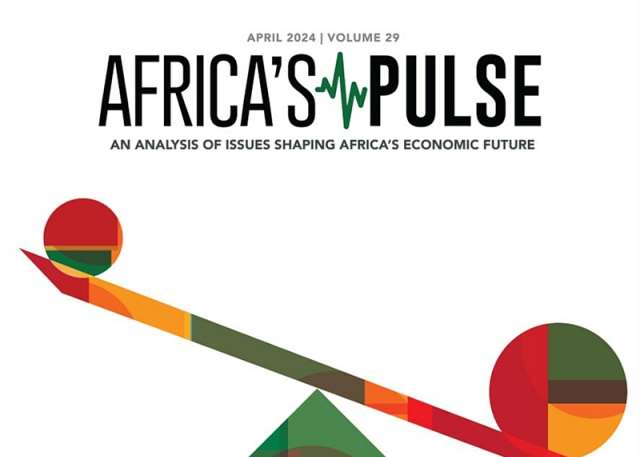The World Bank released a report on Monday forecasting a higher growth prospect for Sub-Saharan African (SSA) economies in 2024, with fragile recoveries.
The Bank’s latest Africa’s Pulse report released in Washington DC said SSA economies would grow at 3.4 percent in 2024 and 3.8 percent in 2025, from a low of 2.6 percent in 2023.
The report attributed the growth to a decline in inflation which would induce private consumption.
The projection notwithstanding, the report said recovery remains weak as inflation remains generally high compared to pre-COVID-19 pandemic levels, despite easing in many economies.
The uncertain global economic conditions, growing debt service obligations, frequent natural disasters, and escalating conflict and violence also make the recovery fragile, said the Africa’s Pulse report.
According to the report, the pace of economic expansion in the region remains below the growth rate of the previous decade (2000-2014) and is insufficient to have a significant effect on poverty reduction.
Moreover, it said due to multiple factors including structural inequality, economic growth reduces poverty in Sub-Saharan Africa less than in other regions.
The report also painted differing pictures of prospects for the different geographical regions, forecasting that South Africa would witness a doubling of its growth rate to 1.2 percent in 2024, while Angola’s growth is anticipated to rise to 2.8 percent, primarily driven by the non-oil sector amid declining oil production.
On the other hand, the East African Community region is expected to experience robust growth of 5.3 percent this year, propelled by strong performances in Kenya, Rwanda, Uganda, and the Democratic Republic of Congo.
However, it said, Nigeria, West Africa’s largest economy, is projected to grow at a rate of 3.3 percent this year, below its long-term average.
One persistent concern about the SSA region, according to the report is debt distress, with Zambia, Ghana, and Ethiopia defaulting on their external debt in recent years. While the public debt-to-GDP ratio is forecast to decrease from 61 percent in 2023 to 57 percent this year, more than half of the countries remain at high risk of debt distress, as highlighted in the report.

“Transformative policies are needed to address deep-rooted inequality to sustain long-term growth and effectively reduce poverty,” the Africa’s Pulse report urged.
Several policy actions, including restoring macro-economic stability, promoting inter-generational mobility, supporting market access, and ensuring that fiscal policies do not overburden the poor, would foster stronger and more equitable growth, added the report.
Andrew Dabalen, World Bank Chief Economist for Africa, commented that “in a context of constrained government budgets, faster poverty reduction will not be achieved through fiscal policy alone. It needs to be supported by policies that expand the productive capacity of the private sector to create more and better jobs for all segments of society.”
“Per capita GDP growth of one percent is associated with a reduction in the extreme poverty rate of only about one percent in the region, compared to 2.5 percent on average in the rest of the world,” Dabalen added.

